Tokyo tête-à-tête
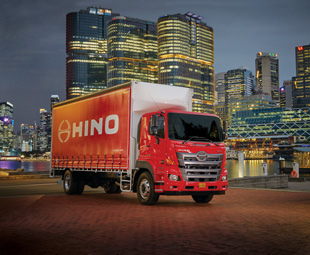
Shortly before the new model’s local media reveal, CHARLEEN CLARKE had the exclusive privilege of being the only journalist to get behind the wheel of the new Hino 500 Series Wide Cab
The country? Japan. The exact location? The Hino Customer Technical Center (they spell it the American way) in Tokyo. It opened in June 2005 and, at the time, it was the first permanent customer training facility managed directly by an automotive manufacturer in Japan. So, real ground-breaking stuff.
The facility is used for training (drivers are taught how to drive more economically and more safely, too), product presentations, exhibitions and testing.
Thanks to the testing function, I’m sitting in a Hino bus. All the windows are shrouded in curtains; even the front of the bus is covered up.
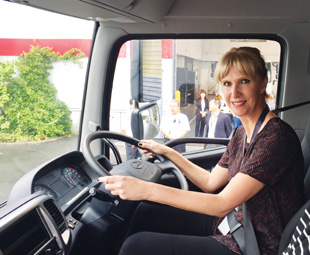 The reason for the cloak and dagger routine is secrecy; there are some hush-hush vehicles just outside our bus. I wonder if I shouldn’t sneak a peek…
The reason for the cloak and dagger routine is secrecy; there are some hush-hush vehicles just outside our bus. I wonder if I shouldn’t sneak a peek…
I resist the urge – only just, but I decide to behave myself (for once) … because I’m about to have a wonderful experience. I’m part of a group of journalists visiting Hino – but I’m the one and only journalist who is going to be permitted to drive the new 500. I don’t want to blow the opportunity!
The visit starts off with an explanation of the facility, which is exceptionally well used. Thousands of customers visit the centre each year; many of them enjoy training on the 1,3-km test track in one of the 38 vehicles available here for training purposes. The results have been exceptional; fuel consumption is generally reduced by a whopping 20 percent after drivers undergo training!
But I’m not going to worry too much about driving economically today. Instead, I’m going to glean as much knowledge as possible about the new range.
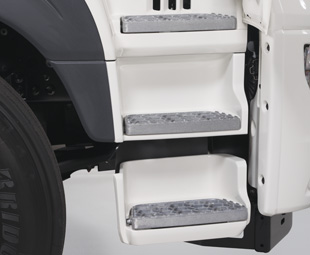 Prior to my actual driving, I’m informed that we can expect 4×2, 6×2 and 6×4 models in the range, with a gross vehicle mass (GVM) of 16 to 18 t. Big improvements have been made in the areas of safety (both active and passive). ABS and a driver airbag will be standard, for instance, which was not the case with the predecessor. Furthermore, easy start is being incorporated – meaning you can stop on an incline with a full load and then pull off, and the truck won’t roll back (even in the case of a manual transmission).
Prior to my actual driving, I’m informed that we can expect 4×2, 6×2 and 6×4 models in the range, with a gross vehicle mass (GVM) of 16 to 18 t. Big improvements have been made in the areas of safety (both active and passive). ABS and a driver airbag will be standard, for instance, which was not the case with the predecessor. Furthermore, easy start is being incorporated – meaning you can stop on an incline with a full load and then pull off, and the truck won’t roll back (even in the case of a manual transmission).
One of the outstanding features of the new range is Hino’s obsession with quality, durability and reliability (QDR) when it came to the development of the new truck. The 500 Series Wide Cab is the result of seven years of development and senior Hino officials were at pains to point out that QDR was foremost in their minds.
They need not have bothered; this is immediately apparent when I enter and drive the truck. There are no rattles or shakes; the 500 Series is a real quality act.
Before I get to the actual driving, however, I take a walk around the truck and check it out. I decide that I really like the new exterior, which looks even more rugged than before. The front is all new, as is the staircase entry-step layout. This is so much better than the previous in-line steps; ingress and egress are much easier. Three easy steps later, I’m seated in the cab.
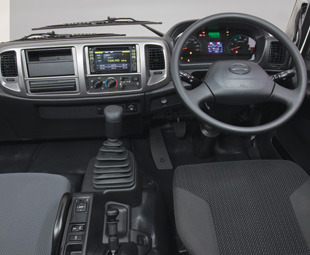 I note that new interior features include a tilt and telescopic adjustable steering wheel, pendulum style pedals, cruise control, and a new instrument panel. I really enjoy the clear instrumentation and the ergonomics are superb (which, actually, isn’t anything new for Hino).
I note that new interior features include a tilt and telescopic adjustable steering wheel, pendulum style pedals, cruise control, and a new instrument panel. I really enjoy the clear instrumentation and the ergonomics are superb (which, actually, isn’t anything new for Hino).
The interior is very car-like in terms of levels of comfort; the engineers tell me that they have paid lots of attention to the suspension and to improving levels of comfort – and they’ve undoubtedly succeeded in their quest. The truck I drive, for instance, features an Isri 6860 seat, which is wonderfully comfortable. The new 500 Series has a range of suspension options (the model I’m driving has air suspension).
Thanks to the twin-mirror set-up on each door, which is aided by convex mirrors on the lower section and a kerbside mirror off the passenger door, all-round visibility is excellent.
I drive a 6×2 model with the Hino J08E six-cylinder engine. It’s a revised, but not new, motor; maximum governed engine speed is higher as is the compression ratio. Peak power output of 206 kW is now delivered at 2 500 r/min and torque has been increased by seven percent to 883 Nm at 1 500 r/min.
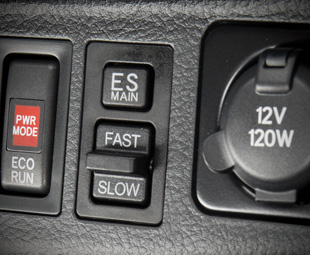 The engine is matched to a six-speed Allison automatic transmission, which delivers smooth and seamless full-power shifts for faster acceleration. The truck is carrying a payload of 15 t, and it carries this load effortlessly. I drive fairly conservatively, but the Hino driver who accompanies me encourages me to increase my speed as we are ascending a hill. The truck does this effortlessly; there is a lot of torque available really low down.
The engine is matched to a six-speed Allison automatic transmission, which delivers smooth and seamless full-power shifts for faster acceleration. The truck is carrying a payload of 15 t, and it carries this load effortlessly. I drive fairly conservatively, but the Hino driver who accompanies me encourages me to increase my speed as we are ascending a hill. The truck does this effortlessly; there is a lot of torque available really low down.
Will the new 500 Series sell well? Of this I have no doubt. Since 2000, some 350 000 of these trucks have been sold worldwide and, in its latest incarnation, these sales successes will undoubtedly continue.
Why do I say this? Well, I reckon that operators are going to delight in these new trucks, which promise superior fuel consumption and exceptional reliability. Drivers, on the other hand, are in for a treat. These trucks feel European-like; they’re quiet and comfortable, refined yet dynamic. Bravo, Hino!
Published by
Focus on Transport
focusmagsa




